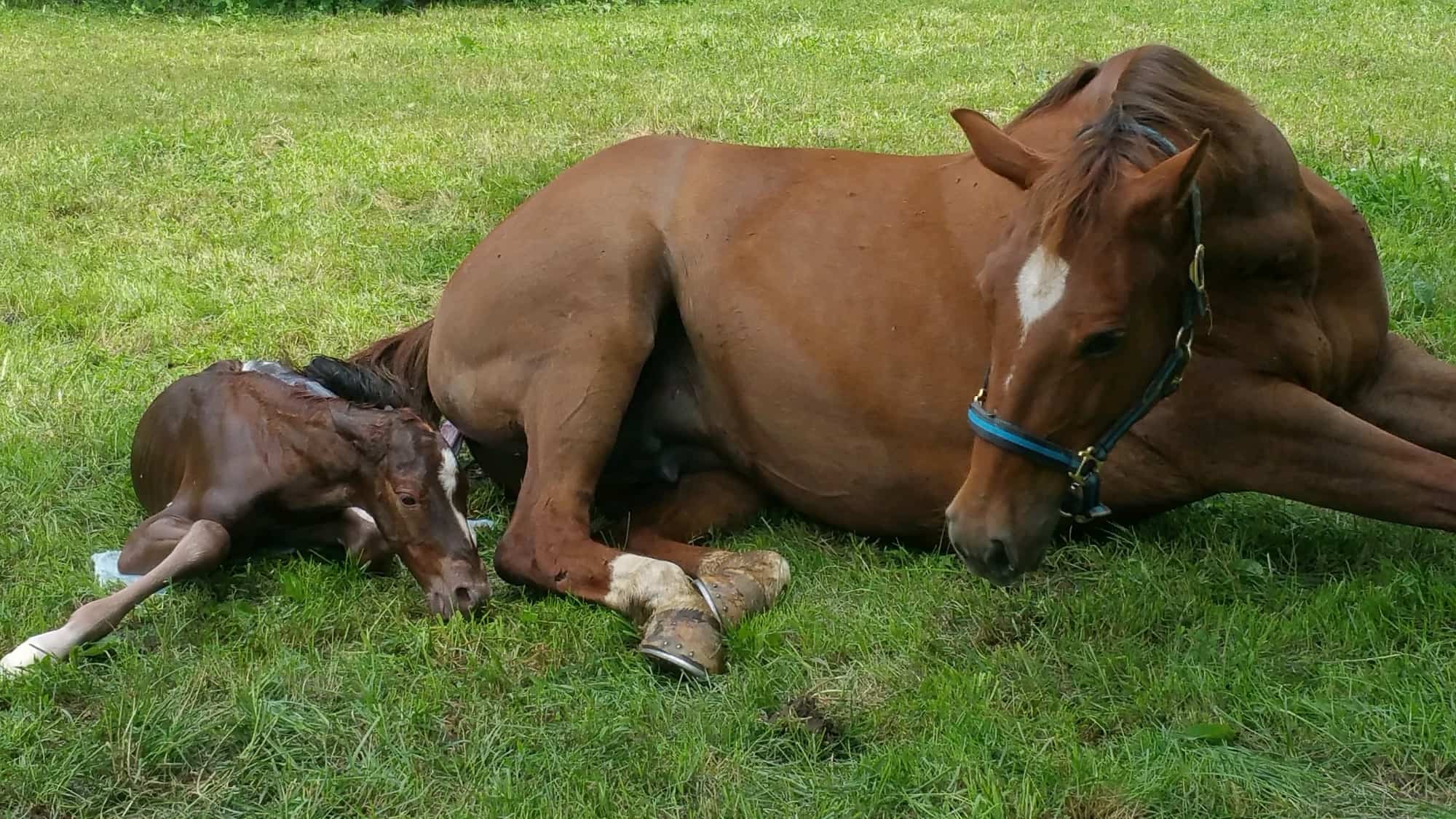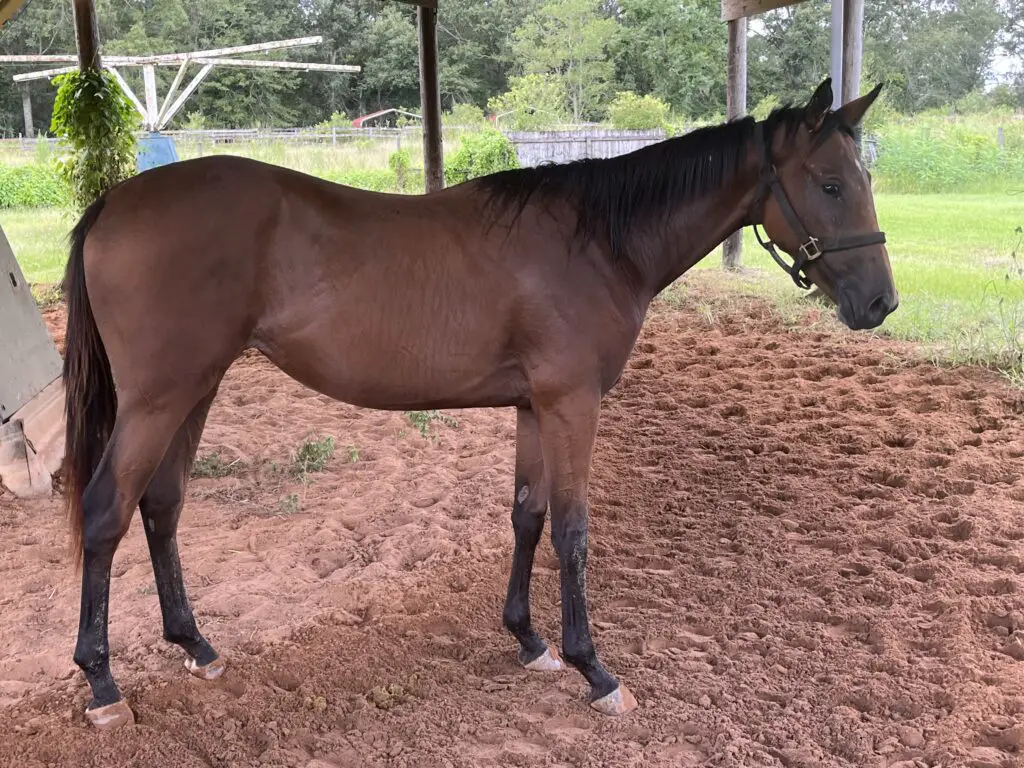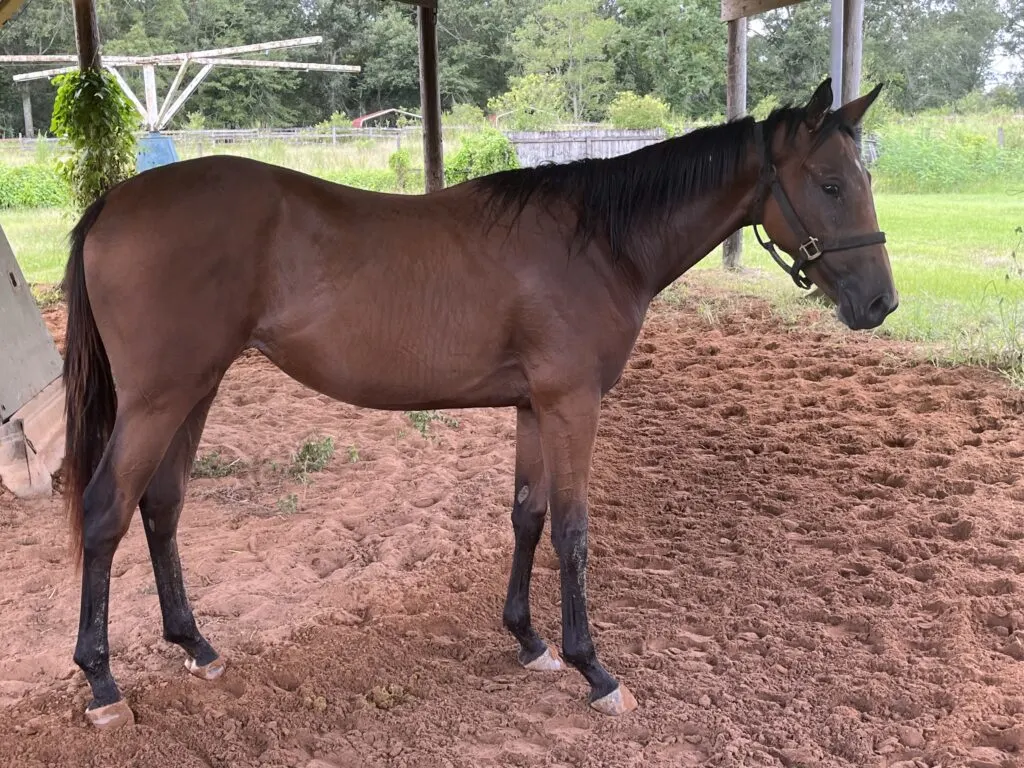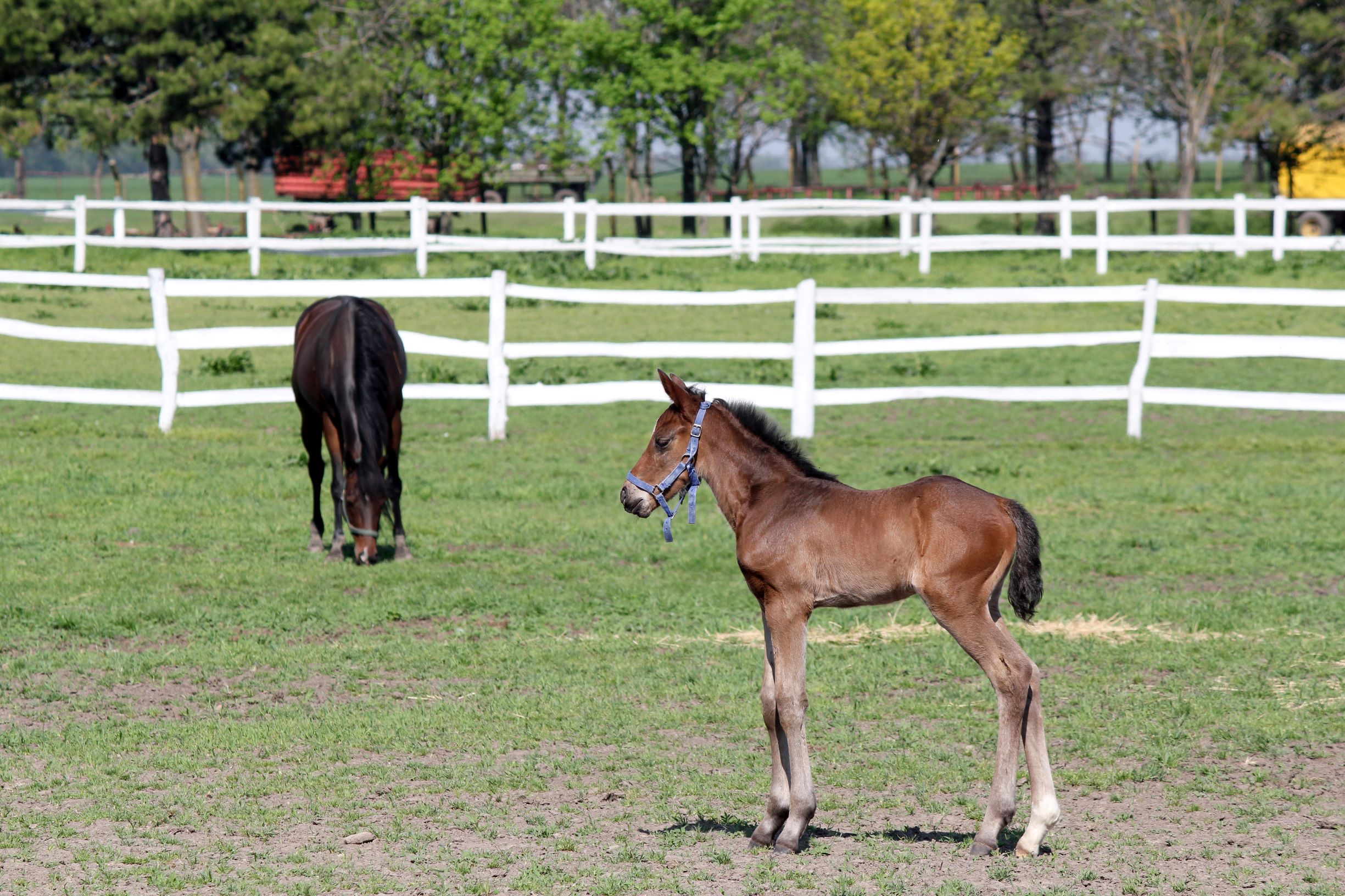In the world of equestrianism, precision in language is as important as a steady hand on the reins. Recognizing the correct terms for horses at various stages of their lives isn’t just a matter of tradition — it’s essential for clear communication and understanding in horse care, breeding, and training. Among these terms, knowing what a young female horse is called reflects one’s familiarity with equine terminology and age classifications. This article is a comprehensive guide to understanding horse gender and the enchanting journey from a young female horse, or filly, to a mature mare.
Exploring the Nuances of Equine Terminology

Equine aficionados and industry experts recognize the importance of a detailed grasp of the terms related to horse gender and developmental stages. This intricate understanding is fundamental to the welfare and management of horses, contributing to the ongoing excellence in equine practices.
Understanding the Spectrum of Equine Gender Designations
Equine gender designations are nuanced and provide valuable insights into behavior and health. For example, a ‘rig’ or ‘ridgling’ is a male horse with one or both testicles undescended. Grasping such terms is indispensable for nuanced communications in equine circles.
- Rig/Ridgling – A male horse with undescended testicles
Insights into Equine Developmental Stages
Understanding the developmental stages of horses, reflected in age-specific classifications, is key to their proper care. These classifications are more than labels; they guide the care and monitoring of horses throughout their growth.
| Developmental Stage | Description |
|---|---|
| Weanling | A recently weaned horse |
| Colt | A male horse younger than four years |
Deepening Knowledge of Horse Gender and Breeding Roles
Enhancing our understanding of specialized breeding terms enriches our knowledge of equine lineage and breeding strategies. Terms such as ‘broodmare’ and ‘sire’ denote roles in equine reproduction and are essential for those involved in breeding.
- Broodmare – A mare utilized for breeding
- Sire – A stallion designated for breeding
With a comprehensive grasp of terms related to the mare, equine terminology, and the finer points of understanding horse gender, we cultivate a deeper respect for these magnificent animals. This enhanced vocabulary is not just theoretical; it is a practical asset that improves our engagement with horses and supports their proper care and management.
Understanding the Growth Journey of a Filly

The developmental progression of a filly is characterized by vital stages that shape her future role in various equestrian capacities. These stages are not just crucial for the individual horse but also influence breeding and equestrian sports. Comprehending the growth process is vital for those involved in the equine field.
Early Development of a Young Female Horse
A filly’s initial years are pivotal as they set the foundation for her abilities and behavior within the herd. This time frame is essential for her to learn and grow, which will later define her capabilities in various equestrian roles.
Developmental Milestones for a Filly
As a young female horse nears maturity, she goes through several developmental milestones that are crucial for her well-being:
- Physical Development: It is important to ensure that the filly’s physical growth is on track to avoid any future health complications.
- Early Social Development: Socializing with other equines and humans is essential for the filly’s future interactions.
- Foundational Training: Early training includes essential skills which may vary depending on whether the filly will be used for riding, driving, or other disciplines.
Nutritional Considerations for a Growing Filly
Proper nutrition is crucial for a filly’s development. A diet that meets her specific needs will support her health and prevent issues such as developmental orthopedic diseases (DOD).
Becoming a Mature Mare
The transformation from filly to mare typically occurs around four to five years of age, depending on breed and individual growth rates. Once mature, the mare takes on her role within the herd and may be assessed for breeding suitability based on physical and genetic attributes.
Healthcare for a Young Female Horse
Consistent health and veterinary care are essential in a filly’s early years. Preventative measures, such as regular check-ups, vaccinations, and parasite control, ensure a solid health foundation.
Genetic Influence on a Filly’s Prospects
A filly’s genetic background informs her potential suitability for various equestrian disciplines. Trainers and breeders evaluate these genetic factors to guide training and breeding decisions, which will shape her journey in the equine world.
Overall, the term ‘filly’ signifies a crucial phase filled with growth and preparation for the later responsibilities of a mare. Those who are invested in equine care, training, and breeding must understand this transformative period to make decisions that will affect the filly’s future and her contribution to the equine industry.
The Fundamentals of Horse Breeding and Mare Evolution

Grasping the essentials of horse breeding illuminates the pivotal transformation that a young filly undergoes as she matures into a mare, with some becoming integral to the breeding program as broodmares. This progression is critical in the realm of equine reproduction. Breeders assess a range of factors to determine if a filly is fit to become a broodmare, such as her pedigree, health, physical structure, and behavior. These evaluations are essential to future progeny quality and the preservation of breed standards.
Broodmare Selection Factors
When selecting a broodmare, breeders conduct thorough examinations of the following:
- Bloodline Analysis: Assessing the mare’s lineage to ensure transmission of favorable genetic characteristics.
- Structural Evaluation: Examining the mare’s physical build for attributes that could influence offspring capabilities.
- Medical History: Reviewing the mare’s health records to inform predictions about her offspring’s vitality and resilience.
Analyzing Lineage and Achievement
As a filly reaches maturity, her ancestry and performance become key in deciding her suitability for breeding. A mare’s competitive or racing background, paired with her genetic lineage, inform breeders about her inheritable qualities. The goal is often to match these with a stallion’s traits to create offspring with optimal characteristics.
Broodmare Care Practices
Once a filly transitions into the role of a broodmare, her care regimen is adapted with a focus on reproductive health and successful foaling. Adjustments include:
- Fertility Health Checks: Ensuring the mare’s reproductive system is ready for breeding and gestation through frequent veterinary examinations.
- Dietary Planning: Modifying the broodmare’s nutrition to meet the demands of pregnancy and nursing.
- Physical Management: Regulating exercise and outdoor activities to keep the mare in good shape while preventing stress during pregnancy.
The Estrus Cycle in Breeding
Understanding a mare’s estrus cycle is a crucial component of horse breeding. Breeders need to align the mare’s cycle with the intended breeding dates to enhance the chances of conception. During this period, the mare’s condition is meticulously supervised to preempt any fertility complications.
Genetic Considerations in Breeding
The genetic attributes a mare possesses extend their impact beyond the current breeding cycle and have lasting effects on the breed. Breeders prioritize genetic health and diversification to curtail hereditary ailments and enrich preferred traits in the population.
Reproductive Innovations
Contemporary horse breeding has been transformed by reproductive advancements such as artificial insemination and embryo transfer, expanding the possibilities for breeders. These techniques allow for a wider genetic mix and improve the prospects of breeding success.
The journey of a filly is meticulously shaped by her latent potential as a prospective broodmare. Through a solid understanding of horse breeding basics, breeders make strategic choices that influence the trajectory of equine distinction for future lineages.
Comparing Young Horses: Colt Versus Filly

Discerning the differences between a colt and a filly is essential in the equestrian world. These variations encompass more than mere physicality, extending to behavioral traits that influence management and training approaches. Recognizing and catering to these distinctions allow for more efficient preparation for their eventual equestrian roles.
Physical Characteristics of Colts and Fillies
Colts and fillies showcase unique growth patterns that manifest in their physical development. Colts are generally characterized by a more muscular build and a swift growth trajectory, whereas fillies possess a more refined structure, often maturing sexually earlier than their male counterparts.
- Colts: Larger, more muscular build; quicker growth pace
- Fillies: Finer bone structure; precocious sexual maturity
Behavioral Differences Between Colts and Fillies
Distinct behavioral tendencies are evident in colts and fillies from an early age. Colts may express a more assertive nature, while fillies often exhibit calmer and more amenable behavior. It’s important to note that these are tendencies and individual personalities can differ significantly.
- Colts: Tend to be more assertive and energetic
- Fillies: Often display a more docile and cooperative nature
Training Approaches for Young Horses
Training methods are frequently adapted to align with the gender of the young horse. For example, colts may thrive with a more rigorous training schedule to harness their energetic disposition, whereas fillies often benefit from a measured approach that takes advantage of their naturally gentle demeanor.
Developmental Health and Care
Diligent health care and tailored nutrition are vital for the growth of young horses. Colts often have higher caloric requirements due to their larger size and growth speed, while fillies necessitate a diet that caters to their specific growth patterns and earlier maturation.
| Aspect | Colt | Filly |
|---|---|---|
| Nutritional Needs | Increased caloric intake | Balanced diet for consistent growth |
| Health Concerns | Potential for rapid growth-related issues | Risk of early maturational disorders |
Social Dynamics in Young Horses
The socialization process for colts and fillies can exhibit different requirements. Colts may demand more direction to foster acceptable social behaviors, especially in diverse herds, while fillies generally adapt more smoothly into herd dynamics, though careful observation is still advisable.
Awareness of the inherent qualities of colts and fillies enables better support during their development into mature horses. This insight is not only advantageous for the animals’ well-being but also crucial for those aiming to excel in various equine activities.
If you’re looking to expand your knowledge about horses and their various life stages, you’ve come to the right place. For those curious about the terminology used for female horses, you can dive into our article on what a female horse is called. Similarly, if you’re interested in the names given to their offspring, our piece on what a baby horse is called has you covered. And for a comprehensive understanding of both genders, check out our detailed article explaining what male and female horses are called. All these resources are here to help you become more familiar with equine terminology!
Conclusion

Key Takeaways in Understanding Horse Gender
Understanding horse gender is fundamental to the equestrian world. It ensures the well-being of the animals and the success of breeding programs. Recognizing a filly and her path to becoming a mare is just one aspect of this comprehensive knowledge.
The Importance of Correct Equine Terminology
Using correct equine terminology is not only a sign of respect for the tradition of horsemanship but also a practical necessity for clear and effective communication. Whether for the seasoned professional or the enthusiastic novice, knowing the terms like filly and mare enriches the equestrian experience and fosters a deeper connection with these magnificent animals.



